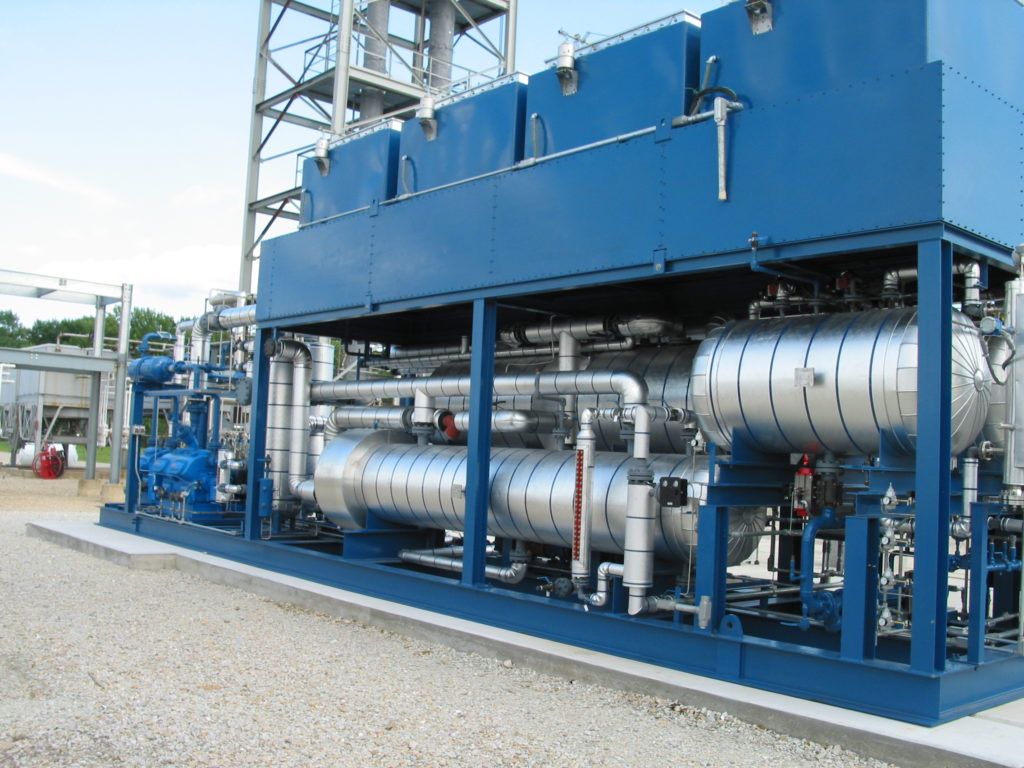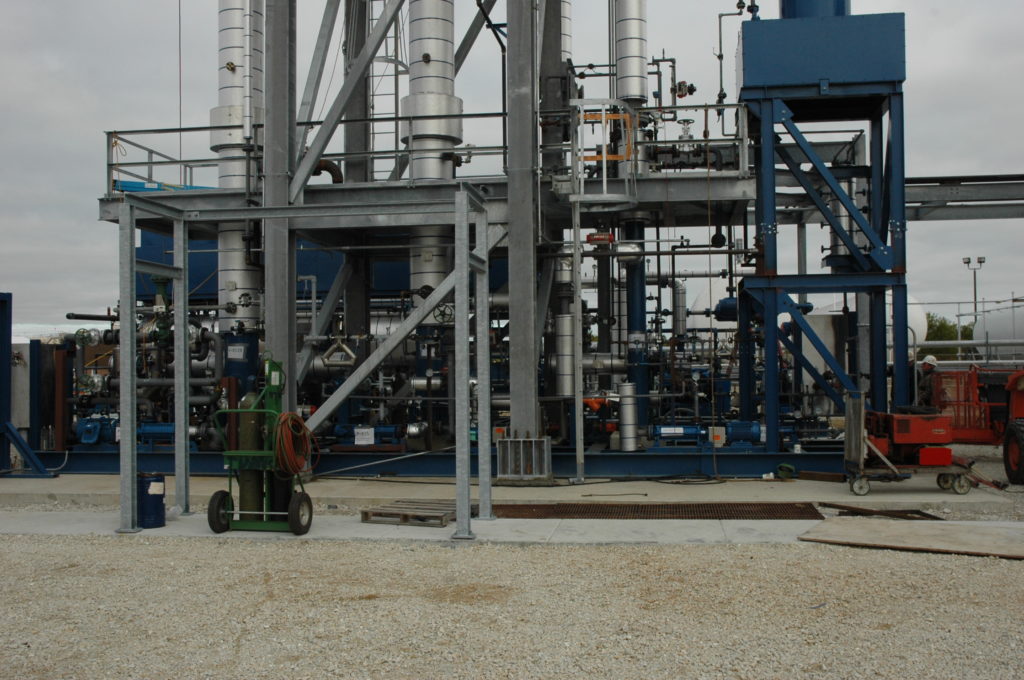
Gas To Liquids (GTL) Plants are being used to meet the increasing interest in reclaiming stranded natural gas around the world. GTL technology is quickly evolving as an economic means to add value to gas that otherwise has limited worth and utility. GTL solves stranded gas problems by converting the gaseous material to synthetic hydrocarbon liquids that can be transported and sold more easily and cost-effectively.
In many places around the world, pockets of natural gas are discovered in remote areas where cities, ports, and existing pipelines are not easily accessible. This natural gas is stranded – unusable without some economical way to bring it to market. Building and maintaining miles of pipeline or power lines is prohibitively expensive, so in most cases the best solution is to convert the natural gas to a liquid for transport.
As an alternative to liquefied natural gas (LNG), GTL technology has several advantages. LNG requires a large capital investment, both for the expensive liquefaction process and for the storage, transportation, and regasification of the highly pressurized natural gas. A GTL plant produces low vapor pressure hydrocarbons such as diesel oil that are easily transportable and don’t require regasification. GTL hydrocarbons can also be used on-site for power production and running equipment, and have particular applications in avgas (aviation fuel).
Synthetic hydrocarbon liquids may be produced either through direct conversion from gas or via indirect conversion using syntheses gas (syngas). The direct conversion is thermodynamically too inefficient to be economically viable. The addition of the syngas production step makes the process more capital-intensive, but the efficiency is acceptable (in the 60-65% range).
Syngas production can use a steam methane reforming (SMR) process, partial oxidation or a combination. Since the desired H2/CO ratio is around 2, a combination known as auto-thermal reforming (ATR) is preferred.

Reformer design for syngas production (CO + H2) is critical to this process. Sep-Pro has proprietary reformer technology and has developed a cost-effective reformer, since this is the major cost component of the GTL process.
Fischer-Tropsch remains the dominant reaction sequence for synthetic fuels manufacturing. The actual Fischer-Tropsch reactions are carried out using either cobalt-based or iron-based catalysts. The reactor designs used are either vertical fixed tubes with the catalyst in the tubes or a slurry reactor in which the catalyst is distributed in liquid wax through which heated syngas is purged for reaction purposes. Since the Fischer-Tropsch reactions are highly exothermic it is critical that the heat be removed quickly. The reaction temperatures are a major factor in determining the distribution of hydrocarbon products.
Sep-Pro Systems is focusing on small GTL applications, namely 1000 to 3000 BPD (10MM to 30MMSCFD natural gas feed) GTL production facilities. Since Sep-Pro modularizes where feasible, significant cost savings can be realized in building such plants.
Advantages of Sep-Pro GTL Systems
- We can build units as small as 100 BPD which can have a simple payback of 1.5-2 years
- The design can be modified to produce different molecular chain lengths
- The reformer is compact and less expensive than steam methane reforming
- Since we are an ASME code shop, we design and build our own reactors, heat exchangers, separators, and fractionation columns
For more information about Sep-Pro Gas To Liquids (GTL) solutions, contact us today.
Certifications
Sep-Pro Systems, Inc. maintains certification with the American Society of Mechanical Engineers (ASME) for “U” stamped vessels and the National Board for “R” stamped repairs.

